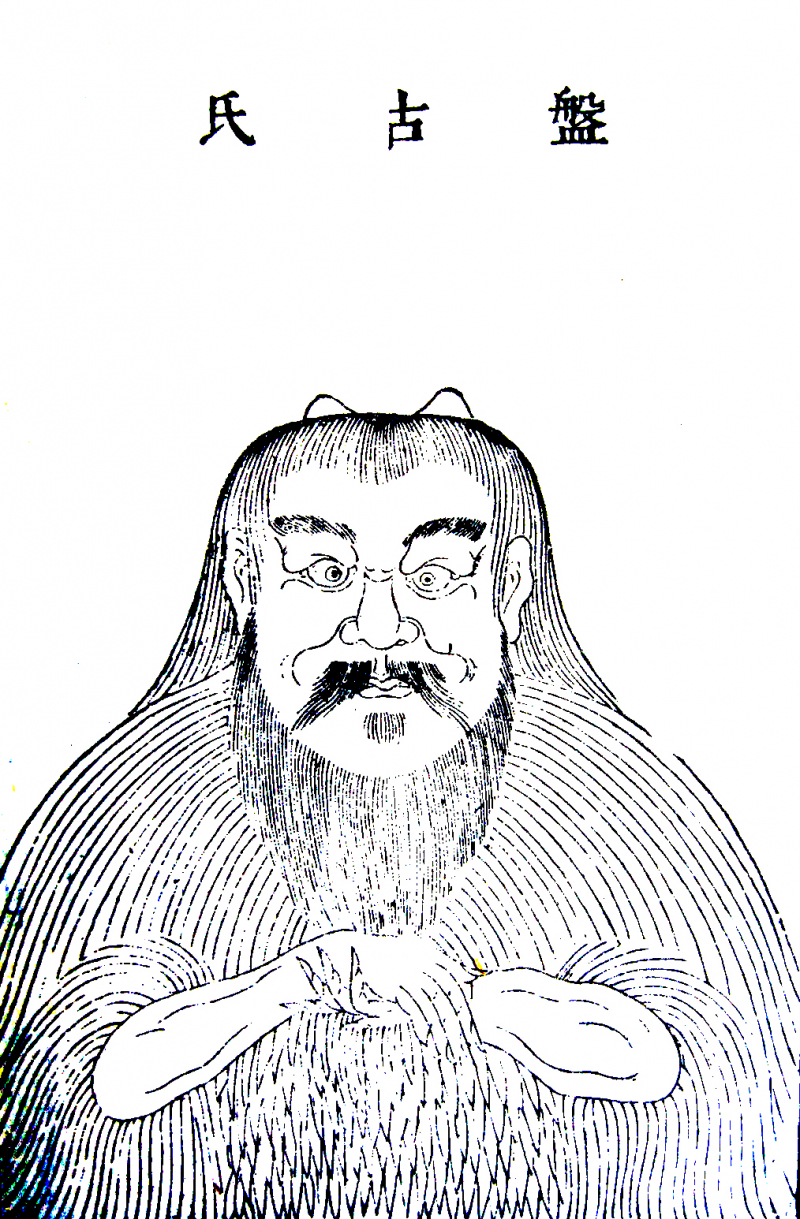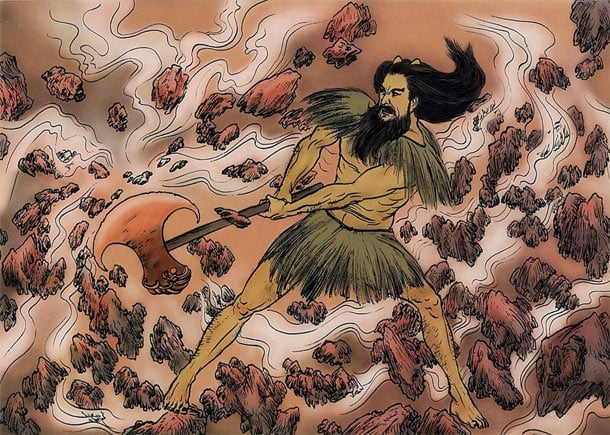Pangu Creates the World
There are numerous tales of the magnificent kings of ancient China's oldest mythology, but no creation myths. The most accurate Chinese creation myth is undoubtedly the tale of Pangu (also known as Panku). In the creation myths of the Chinese Taoists, Pangu is the main character.
Pangu is a well-known character in Chinese creation mythology. The Zhuang people still sing a traditional song about Pangu creating Heaven and Earth. The origins of the Pangu myth have long been debated. Many believe it originated with Xu Zheng, a Chinese author from the third century AD, as he was the first to record it; others believe it originated in the mythologies of the Miao or Yao people of southern China, while others see a parallel to ancient Hindu creation mythology.
The Pangu myth goes as follows: At first, the universe was nothing but chaos, and the heavens and the earth were mixed together - often compared to a large, black egg. The Yin and Yang balanced as Pangu developed throughout the 18,000 years that he slept after being born inside of this egg. He discovered he was stuck inside it when he opened his eyes. He separated the Yin and Yang by breaking the egg and starting to push the pieces apart. The sky above him appeared in the upper half of the shell, and the earth appeared in the lower half. The longer he kept them apart, the thicker they grew and the taller he grew, pushing them apart by exactly 10 feet per day. Versions start to change here. Some say a turtle, a qilin, a phoenix, and a dragon helped him with this task. Pangu died after another 18,000 years, his body forming various parts of the earth and the parasites on his body forming humans. Another version claims that he created the earth with a chisel and hammer, while another claims that humans were created by a goddess who later inhabited the earth.
Pangu was the first supreme being and the creator of the heavens and the Earth, according to this myth. He is usually depicted as a dwarf, despite the fact that he was a giant, with horns fixed atop his head and either a chisel, a hammer, or an egg in his hand. Other stories describe a Pangu as a creature from heaven with the head of a dog and the body of a man, accrediting Pangu as the father of mankind, while another version claims he molded men from clay.
The similarities between this story and other myths make it interesting. Scientifically speaking, one common idea that represents the cosmos prior to the Big Bang is the cosmic egg. Although this may seem like a pretty crude way to describe such an incident at first, one cannot help but note how incredibly insightful it is. How could different people who didn't have access to technology or understanding of the cosmos as we know it now explain things so precisely? Were they somehow made aware of this information?
Another intriguing aspect of the story is one of the more enigmatic. According to some versions of the Pangu creation myth, the giant was assisted by four mythical beasts. Let us take a quick look at each of these beasts. The turtle, for starters: the Chinese were not the only ones to include it in their creation myth; various world myths, creation and otherwise, include the turtle for its strength and immortality. The qilin, though native to Asian mythology, is said to resemble a dragon. Dragons are central to Asian mythology though they can be found all over the world as bearers of wisdom and a symbol of power, and they are also linked to the succession of the early emperors. Finally, the phoenix has long been associated with rebirth. Over the years, there has been much speculation about how so many cultures, spread over vast distances, came to utilize the same symbolism and represent similar events.
















